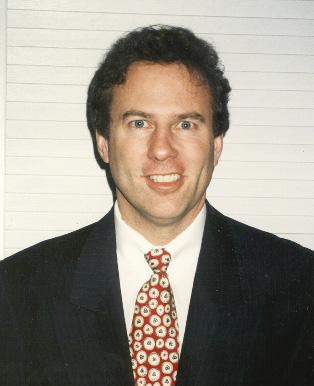ACA: The American Cable Association’s Amazing Bandwidth

Much to the chagrin of my dear wife, several decades into my telecom life, I often find myself directly comparing real life to the telecom industry (and vice versa).
Thus, to describe one of the U.S. cable industry’s many trade groups, I can make no better analogy than that of the American Cable Association. The ACA is the paradigm of a lobbying non-profit that makes the most of limited resources (in the same sense that pay TV providers get more and more channels into a single distribution pipe, via compression and the use of advanced algorithms.
The ACA is most consistently remarkable because of what it does to keep its name and the interests of its constituents relevant and present, even though the ACA employs just eight full-time staff members, and two outside law firms, one a DC-based and one in Chicago. Key to that, just about everyone I know in the industry would agree, is president and CEO, Matt Polka.
Indeed, turn a page of Communications Daily, or of Multichannel News, and the ACA and its positions are being highlighted, often in equal measure as that of the ACA’s bigger cable cousin, the 100+ employee National Cable Telecommunications Association (NCTA). 1
ACA’s Mr. Polka has led the non-profit lobbying trade group for 20 years, working closely today with VPs’ Rob Shema, Ross Lieberman, and Ted Hearn. ACA’s twenty board members help fill out the ACA power base. Each board member represents an ACA member company.
ACA Basics
850 cable companies make up today’s ACA. Those companies then serve an estimated 7.5 million. video subscribers, and a lesser number of broadband subscribers. Voice Over Internet Protocol (VOIP) subscribers served by ACA members are estimated at between 35% and 45%, or around 2 milion. to 2.2 million of the 7.5million video and broadband totals.
Moreover, today’s ACA is nothing if not rural at its core. This means that while the NCTA houses the biggest cable operators owning the lion’s share of national cable subscribers, most of ACA’s membership is made up of small-to-medium-sized cable operators in less populated communities. Unlike the NCTA, content owners are not a core part of the ACA constituency.
Headquartered physically in Pittsburgh, not unexpectedly, the ACA also does a large share of its work in Washington, DC, and especially with the Congress and agencies of the federal government’s Administrative branch, such as the Federal Communications Commission. In Congress, the ACA notes among its more active supporters the members of the current Democratic House. Parts of the legislature critical to the ACA include the Senate and House Judiciary Committees, as well as the Senate Commerce Committee, and its Subcommittee on Communications and Technology.
The ACA, with assets of nearly half a million dollars, was founded in 1992, following the creation of the 1992 Cable Act. Key 2012-13 issues for the ACA include 1) retransmission consent, 2) a full rewrite of the 1996 Cable Act, 3) the renewal of the Satellite TV Extension and Localism Act of 2010 , 4) a reform of the FCC program access rules, and 5) taxes set aside for rural broadband deployment, including Universal Service.
Biggest Challenges and Opportunities
On the opportunities side, ACA , Mr. Polka, and his teams believe that most importantly they must “lead in ways that evolve into positive change,” meaning primarily – in the near to midterm future -- that the ACA has the chance to rewrite some key federal legislation and communications regulations.
That goal is followed by a closely-related opportunity, i.e., helping ACA members to be able to “…better serve and communicate with their subscribers, so as to create a better telecom value for all.”
Both of these opportunities relate closely, too, to the “Number One accomplishment the ACA looks forward to in 2013,” which, according to Mr. Polka, would be actual implementation of the laws and regulations the ACA is now proposing.
NCTC Ties
Of note is the long-standing relationship ACA has with trade group partner, the National Cable Telecommunications Cooperative, headed by Rich Fickle, and HQd in Lenexa, Kansas. ACA constituents typically also are members of the NCTC, the latter of which acts as a clearing house of sorts, negotiating and implementing programming and equipment deals for the larger group of those 850 small-to-mid-sized U.S. cable operators.
Final Thoughts
Few are sure what human algorithm or compression Matt Polka has developed, but suffice it to say that he gets an awful lot of activity out of a limited number of people, measuring his in-house staff and his outside law firms, for example.
For me, in answer to that, I like one of Matt’s last quotes during our talk: “We tend to get our stuff read more.”
Jimmy Schaeffler is chairman and CSO of Carmel-by-the-Sea-based consultancy The Carmel Group (www.carmelgroup.com).
1 Interestingly, although the ACA and the NCTA are almost always in sync, recently, in the case of the program access rules (requiring programming produced/sold by one pay TV operator to be made available at fair rates to a competitor) , NCTA generally supports the issue, while the ACA does not. In short, NCTA’s position is that after 20 years, the competitive conditions in the market are such that they no longer mandate retention of the program access rules. Conversely, ACA’s basic position supports retention of the program access rules, primarily because competitively significant programming is often still controlled by various pay TV operators, and their refusal to sell to an ACA member could be quite harmful; meaning that the FCC should extend the program access rules for another five years, according to the ACA.
Multichannel Newsletter
The smarter way to stay on top of the multichannel video marketplace. Sign up below.
Jimmy Schaeffler is chairman and CSO of The Carmel Group, a nearly three-decades-old west coast-based telecom and entertainment consultancy founded in 1995.

